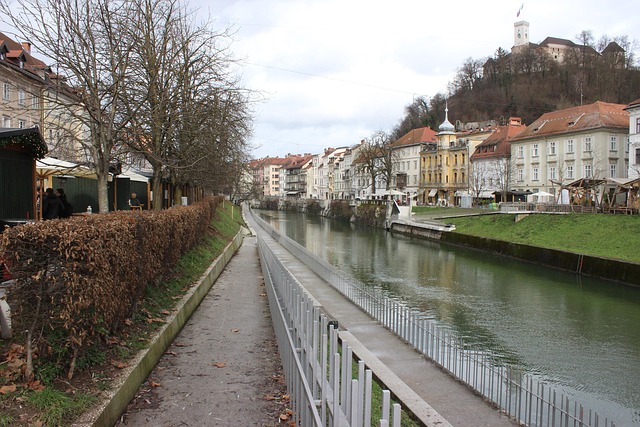In Karachi Cantt, load shedding disrupts daily life and business due to electricity demand exceeding generation capacity. To prevent system overload, controlled power reductions are implemented during peak periods or maintenance. The government is modernizing power distribution through the "Karachi Smart Grid Project" and promoting renewable energy sources. Community initiatives like solar panels and shared storage systems further enhance resilience and sustainability in the face of frequent load shedding.
In Karachi, the enduring issue of electricity load shedding in Cantt has become a defining challenge for local communities. This article delves into the complex dynamics of this crisis, exploring its root causes, far-reaching effects on daily life, and the crucial roles played by electricity distribution companies. We also examine government initiatives aimed at relief and sustainable solutions, while highlighting community resilience and innovative practices that offer hope for a brighter future in the face of intermittent power cuts in Cantt, Karachi.
- Understanding Load Shedding in Karachi Cantt
- Causes and Effects on Local Communities
- The Role of Electricity Distribution Companies
- Government Initiatives and Solutions
- Community Resilience and Sustainable Practices
Understanding Load Shedding in Karachi Cantt

In Karachi Cantt, load shedding is a recurring issue that affects residents and businesses alike. This phenomenon refers to the periodic interruption of electricity supply, typically implemented by the local utility provider as a measure to prevent system overload during peak demand or maintenance periods. Given the city’s rapid urbanization and high energy consumption, effective load management has become crucial for Karachi Cantt to ensure stable power availability.
Understanding load shedding involves grasping the delicate balance between electricity generation and demand. During times of high usage, such as summer afternoons when air conditioning is in full swing, the local grid can strain under the load. To avert blackouts and potential damage to infrastructure, controlled reductions in power supply (load shedding) are implemented, affecting areas or sections of the city for set periods. This strategy allows for a more sustainable distribution of electricity resources, maintaining service integrity for all residents while ensuring the longevity of Karachi Cantt’s energy network.
Causes and Effects on Local Communities

Electricity load shedding, a frequent occurrence in Karachi, has profound effects on local communities. The primary causes include peak demand excess, inadequate infrastructure, and occasional maintenance issues. During these power cuts, residents face significant disruptions in their daily routines and essential services. From interrupted business operations to difficulties in accessing healthcare and education resources, the impact stretches across various sectors.
Moreover, consistent load shedding exacerbates existing challenges for low-income families, who often rely on alternative energy sources or face prolonged periods without electricity. This instability hinders economic growth, negatively affects school attendance rates, and increases community tensions. Understanding these causes and their ripple effects is crucial in devising sustainable solutions to ensure a more reliable power supply in Karachi.
The Role of Electricity Distribution Companies

Electricity distribution companies play a pivotal role in ensuring the reliable delivery of power to homes and businesses across Karachi, Pakistan’s economic powerhouse. These companies are responsible for managing the intricate network that transmits electricity from generation plants to consumers. In the context of Karachi Cantt, one of the city’s central areas, efficient distribution is even more critical due to the high population density and diverse energy demands.
The primary function of these distributors involves maintaining and upgrading infrastructure, including power lines and substations, to meet the ever-growing energy requirements of the region. They also implement load-shedding schedules during peak hours or times of increased demand, balancing supply with demand to prevent system overload. This delicate task is essential for preventing blackouts and ensuring a consistent electricity supply, contributing significantly to the smooth functioning of Karachi’s bustling metropolis.
Government Initiatives and Solutions

In response to the recurring issue of electricity load shedding in Karachi, the government has taken significant steps to mitigate this challenge. Initiatives like the “Karachi Smart Grid Project” aim to modernize and optimize the city’s power distribution network. This project involves implementing advanced technologies for better management, ensuring a more reliable supply. The government is also encouraging renewable energy sources through subsidies and incentives, promoting solar and wind power solutions to reduce the burden on conventional energy production.
Additionally, various programs focus on demand-side management, educating residents about efficient energy usage. These efforts include raising awareness about simple measures like using energy-efficient appliances, fixing leaks, and adopting smart lighting systems. By involving the community and offering practical solutions, the government is working towards a more sustainable and stable electricity supply for Karachi’s residents.
Community Resilience and Sustainable Practices

In the face of frequent electricity load shedding in Karachi, communities are increasingly embracing resilience and sustainable practices. Residents are adopting measures like installing solar panels on rooftops to reduce reliance on the grid during power cuts. Community-level initiatives, such as shared energy storage systems and micro-grids, are also gaining traction, enhancing local self-sufficiency. These efforts not only mitigate the impact of load shedding but also promote a greener and more resilient urban landscape in Karachi. By harnessing renewable energy sources and implementing efficient practices, communities are empowered to navigate power disruptions while contributing to a sustainable future.
Load shedding in Karachi Cantt, though a persistent challenge, offers an opportunity for the city to embrace sustainable practices. By understanding the causes—from grid congestion to inefficient infrastructure—and implementing government initiatives aimed at improving distribution and energy conservation, communities can mitigate the effects on daily life. The role of electricity distribution companies is pivotal in modernizing networks and responding to demand. Ultimately, fostering community resilience through sustainable practices ensures a brighter, more reliable energy future for Karachi.
